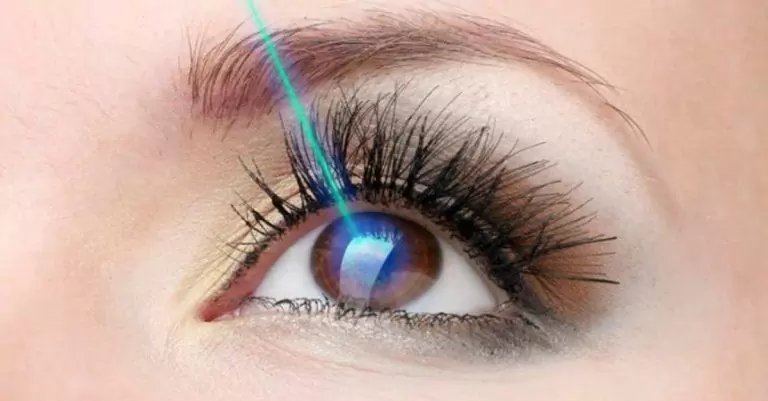Laser Eye Surgery

Operation Details
WHAT IS LASER EYE SURGERY?
General applications are aimed at solving vision problems such as myopia, hyperopia, astigmatism and presbyopia (age-related nearsightedness).
Laser eye surgery, which can be applied for these reasons and many other reasons, is performed with the advice of a doctor after various examination procedures. Some of the points to be considered here are the suitability of the patient’s corneal thickness and shape for treatment. In addition, the patient’s age, health history and visual defect number are also important in deciding whether they are suitable for laser eye surgery.
Laser is an extremely powerful type of light. It is used for different purposes such as burning, cutting and evaporation in many areas of daily life. With the light used for the operation, there is no cutting and splitting situation in general terms. During the procedure, the patient is asked to look fixedly at a certain point, and an eye drawing operation is performed by sending a laser beam to a certain area on the outer surface of the cornea.
Operation Details
WHAT ARE LASER TREATMENT METHODS?
As the name suggests, this is a laser eye surgery treatment with or without touching the eye. This is a suitable method especially for patients who do not like the feeling of contact. In the Trans-PRK (No Touch Laser) method, it is not possible to scrape the anterior wall of the eye by melting it with alcohol or to remove the wall like a hat with a knife or other laser device before the operation. In this method, it is sufficient to look at a distant light source for less than 30 seconds. It is suitable for people have myopia, astigmatism, hyperopia and with appropriate eye structure.
LASIK eye surgery is the well known and quite commonly applied laser eye surgery to correct vision issues. During LASIK eye surgery, a special cutting laser is used to perfectly change the shape of the clear dome-shaped tissue (cornea) in front of the eyes to better the vision.
IntraLaze Lasik Excimer Laser as known as iLASIK is applied to eliminate visual defects such as hyperopia, myopia, and astigmatism in laser eye surgery. In developed iLASIK technology, the valve is created with a femtosecond laser beam and no blade is used.
F.A.Q.
- Drops and medicines prescribed by the doctor should be used with care.
- It is necessary not to hit the eye for a week and not to rub it with hard movements.
- In the first month, sports activities should be done with protective glasses.
- Water should not touch the operation area for a few days after the operation.
- It should be protected from UV light as much as possible, sunglasses should be used when the daylight is sharp.
- Vehicles should not be used immediately after surgery.
- In the first week, especially strenuous work that requires effort should be avoided.
- Regular check-ups should not be interrupted during the period specified by the doctor.
Laser surgery is completed in about 5-10 minutes.
Since laser treatment is applied to the cornea, which is a nonvascular tissue of the eye, it is not a hemorrhagic surgery. Laser treatment is performed under drop anesthesia.
Pain, stinging and watering may occur up to 6 hours after laser operations such as Intralase-LASIK and LASIK, which are performed by creating a flap (flap) in the cornea. Pain can be experienced for 2-3 days after laser applied after peeling the eye surface such as LASEK, PRK. Protective contact lenses can be applied to the eye after the laser to make this pain less felt.
Laser surgery is not an obstacle or cause for any future eye treatment (including cataracts).
The aim of the laser is to see as much without glasses as you can see with glasses. Numbers 0.5 and below are glasses-free values and are perceived as successful. If the laser is done while the tricks are still progressing, it may be necessary to use glasses again. Therefore, the numbers must not be increasing for at least 1 year. After the laser, 95% of myopias and 70% of hyperopia are without glasses.
If the eye structure is suitable, laser can be applied to any number who needs glasses and does not want to wear glasses.
You can usually go to work the next day. Using your medications regularly as recommended by your doctor is as important as the surgery itself. We recommend that you wear sunglasses, as the sun’s rays can be disturbing. You can do all your sports and social activities such as walking, cycling, aerobics. You can board the plane. However, in order to avoid infection, one should not enter the pool or the sea for about 20 days. After the first month, if you wish, you can start using colored lenses for cosmetic purposes.









